|

Emperor Napoleon
Grand Armee
47,520 infantry
6,720 cavalry
60 artillery
(including 16,800 Imperial Guard)
|
BATTLE OF TEUPITZ
JUNE 27th, 1811
|
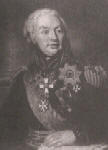
General Buxhowden
Army of Germany
64,320 infantry
4,800 cavalry
30 artiller
(including 25,920 militia infantry)
|
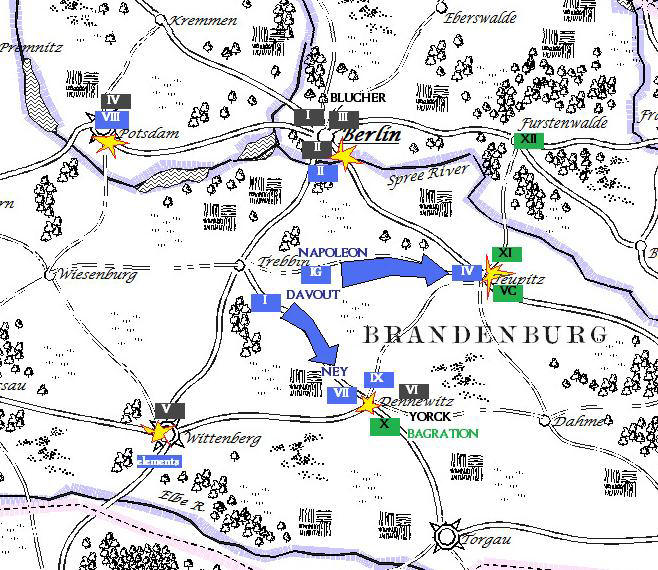
Following the battle of Rehfeld (Torgau), the
French fell back north and west and the Coalition advanced toward Berlin,
seeking to link up with the armies of Blucher who were moving to the capital
from the north. Bagration was generally seeking to get his forces across the
Spree while Yorck was pursuing northwest. He drove Ney back from Dennewitz but
when he pursued on to Trebbin, he was startled to find a hundred thousand French
there. He fell back to Dennewitz with Ney in counter-pursuit. Napoleon, at
Trebbin, was in the process of trying to steal the central position and so while
he pursued south with Ney, he also directed Corps to Teupitz and Berlin, looking
to engage as many enemy forces as possible.
The French goal here was to decisively damage a part of
the Coalition armies while pinning another and drive them apart so that they
could not link up. In order to do that, he pulled troops in from everywhere and
even dangerously weakened his forces at the siege of Wittenberg. Once reports
came in from the different battlefields, the French Emperor chose to reinforce
the battles of Dennewitz and Teupitz, while encouraging II Corps at Berlin to
simply engage and withdraw, tying up Blucher's army for the day.

At Teupitz, General Buxhowden (XI Corps) and
General Platov (V Cavalry Corps) found themselves aggressively engaged by
Marshal Soult in command of French IV Corps. General Bagration was engaged at
Dennewitz so Buxhowden took command and determined that the Russian forces would
make a stand. Not wanting to be too rash, he chose a position east of Teupitz,
on the road southeast toward Lubben, centered on the village of Munchenhof. The
ground around Teupitz was marsh-like, with heavy forests and plenty of rivers
and lakes. The French would have to debauch from the forests to engage the
Russians on the open plains. That might give the Russian artillery and cavalry
enough of an advantage to put them at parity with the quality of the French.
What General Buxhowden did not likely anticipate
was that the French Emperor would be riding to Teupitz alongside Marshal Davout
and that the Imperial Guard and another fresh division of I Corps would be
following behind them. Napoleon had determined that Teupitz was the battle that
he most wanted to ensure was a victory, for at Teupitz, there were fresh
Russians and if General Bagration's wing was to be repulsed, it would need to be
mauled on the battlefield. Thus far, the Russians had avoided taking heavy
casualties. At Torgau, it was the Prussians that were beaten while the Russians
held their ground.
Bagration deployed his large corps fairly wide.
Over the course of the day, the acting commander of XI Corps would be required
to ride from one side of the field to the other repeatedly to keep his formation
in command. The Cavalry was kept centralized where Buxhowden could keep an eye
on it. In an unorthodox move, the Russian deployed their militia in a screen
across their entire front, hoping that it would slow the French down and disrupt
the advance before they could get to grips with the regular Russian army.
Initially, the French only had Soult's I Corps
and its orders were to act on a limited objective initially. They were to
secure deployment area for the reinforcements and establish a gun line that
could soften up the Russians where the reinforcements would later attack. 1500
hrs was the time to aim for to begin the French general advance. Given the
screen of militia that was deployed, Soult took it upon himself to to try drive
in the militia as part of the preparation to attack.

The Columns of Soult advance without fear toward
the militia. The Russian artillery can fire through lanes but there are only
horse artillery in the center. Round about this time, the divisional commanders
of the Russian militia would be ordered to the rear, to wait to rally routing
troops.
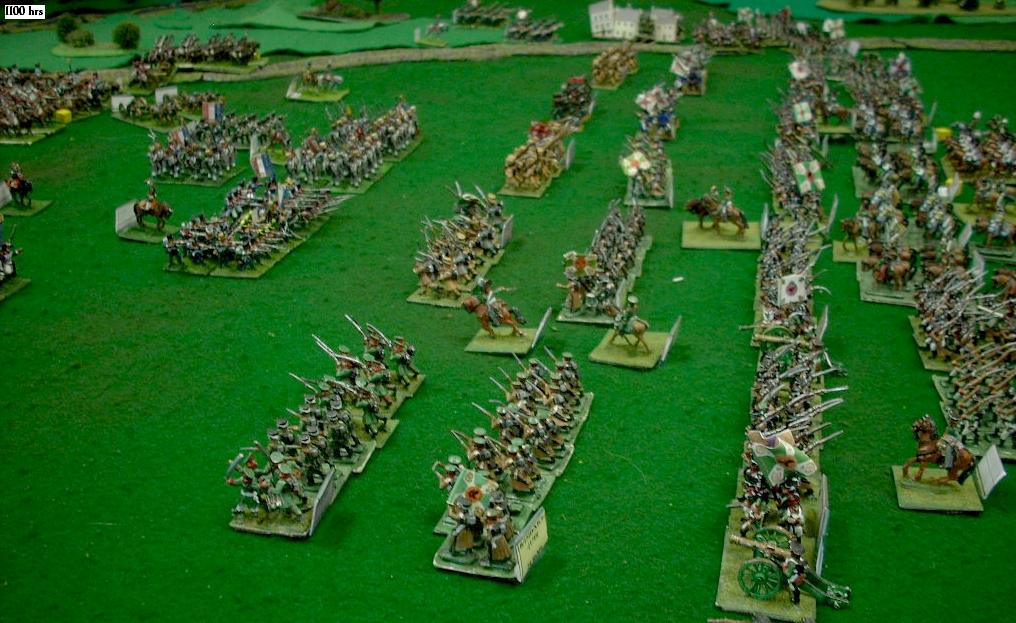
Initially, there would be little effective
resistance. The French columns would endeavour to use the militia to screen them
from the artillery.
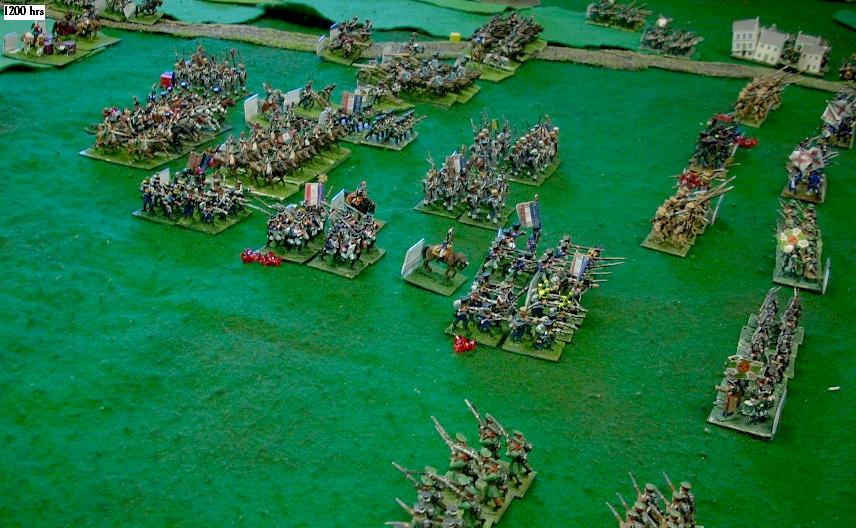
The French use the initiative to bring on
reinforcements earlier. It is the Imperial Guard Corps and a large fresh
division of infantry from I Corps. The remainder of I Corps is fighting at
Dennewitz.
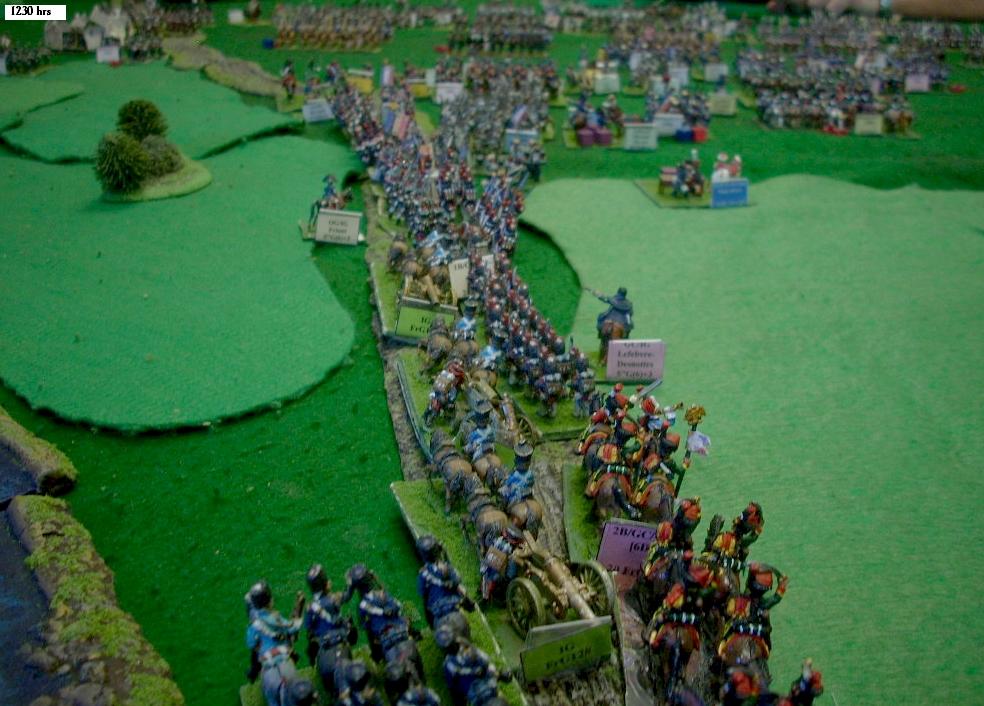
Some of the French brigades suffer setbacks
against the militia but generally there is good progress brushing aside the
poorly equipped Russian serfs. The French mood is patient.
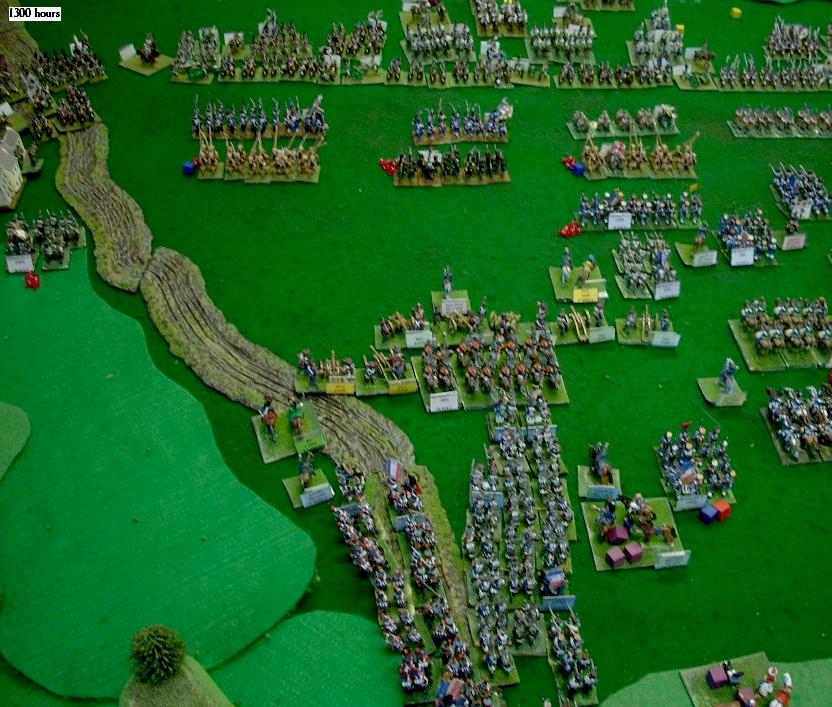
Into the early afternoon now and the French are
still deploying. The grand battery is sweeping away any militia that tries to
stand against it.
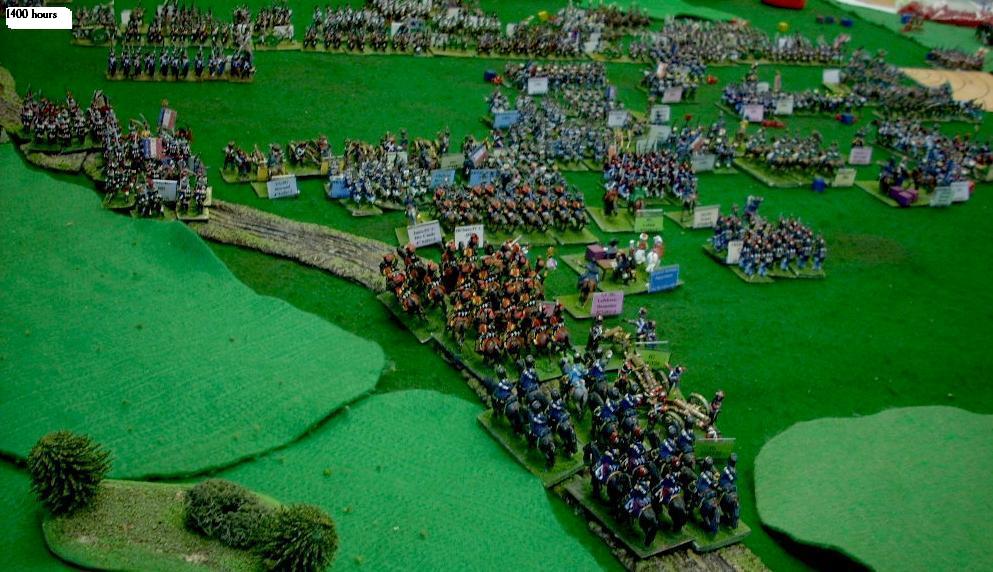
Soult's divisions and the reinforcements provided
by I Corps launch attacks in the center. The French would be unable to get good
cavalry support in for these attacks whereas the Russian cavalry would make
their presence felt. Several French units would be routed back to be rallied and
sent forward again by Marshal Davout. On the far French right flank, the cavalry
of IV Corps would do a bold charge against enemy militia, catching them in line,
and triumph. The entire division though would charge on out of control and one
brigade would be dispersed by the fire from point blank 12lb artillery. The
cavalry division had arrived very fatigued on the battlefield and this would
prove to have a decisive effect. The end result of this charge was that the
Russians would have certain cavalry advantage in the center now.
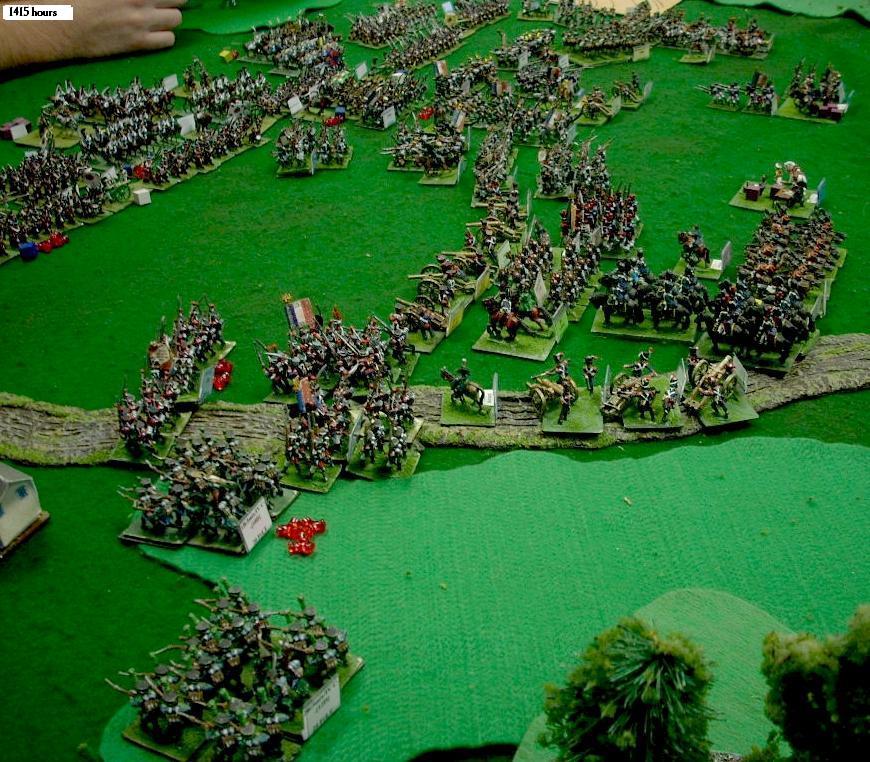
Buxhowden determines that the French Grand
Battery has become intolerable. His cuirassier are ordered forward at the gallop
while also hitting an aggressive French line. The Old Guard would be unable to
directly support the artillery, due to command hierarchy issues. Three French
batteries would be overrun and an infantry brigade routed and the cuirassier
would be able to recall in perfect order.
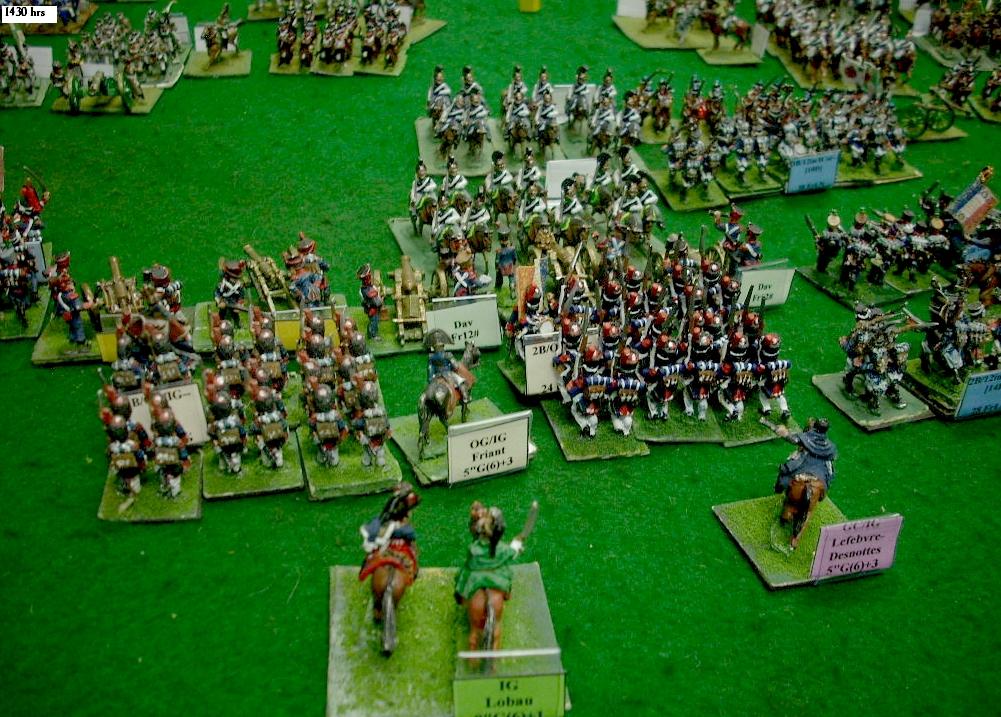
The Cavalry of Napoleon's Imperial Guard would
charge forward, through the debris of the batteries, and would draw in battle
against the Russian cuirassier, sending the bulk of both sides cavalry back
disordered.
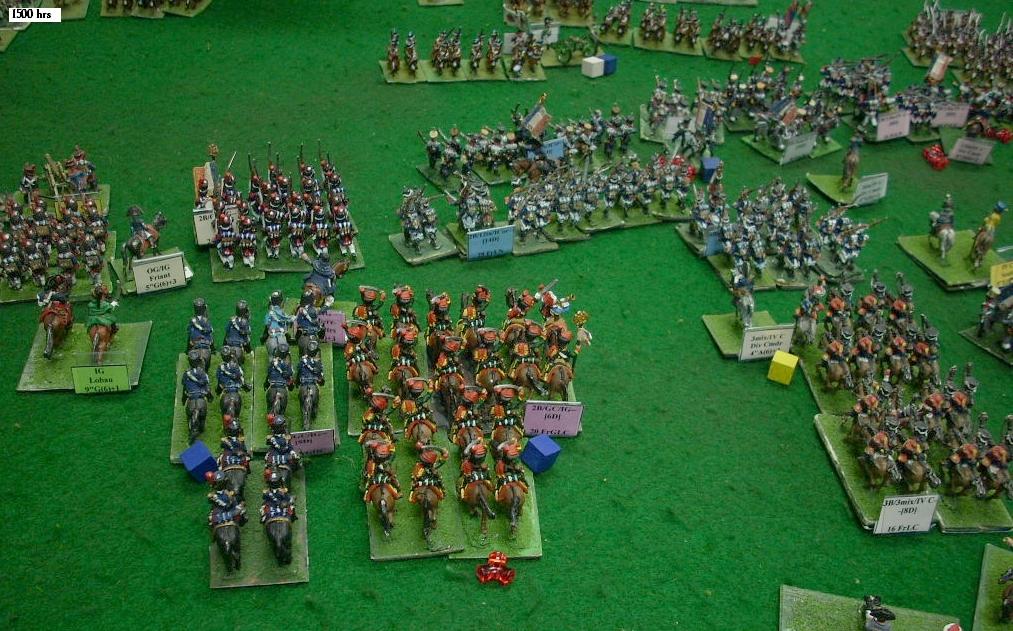
It was 1500 hours and time to launch the French
attack. The French grand battery would have been masked at this point in any
case. The Old Guard goes forward but the Guard cavalry is still reforming and so
cannot support. A third Russian Cuirassier brigade appears and slams into the
flank of the Old Guard Grenadiers. Attacks press in the center and on the French
left. All along the line, the attacks go in.
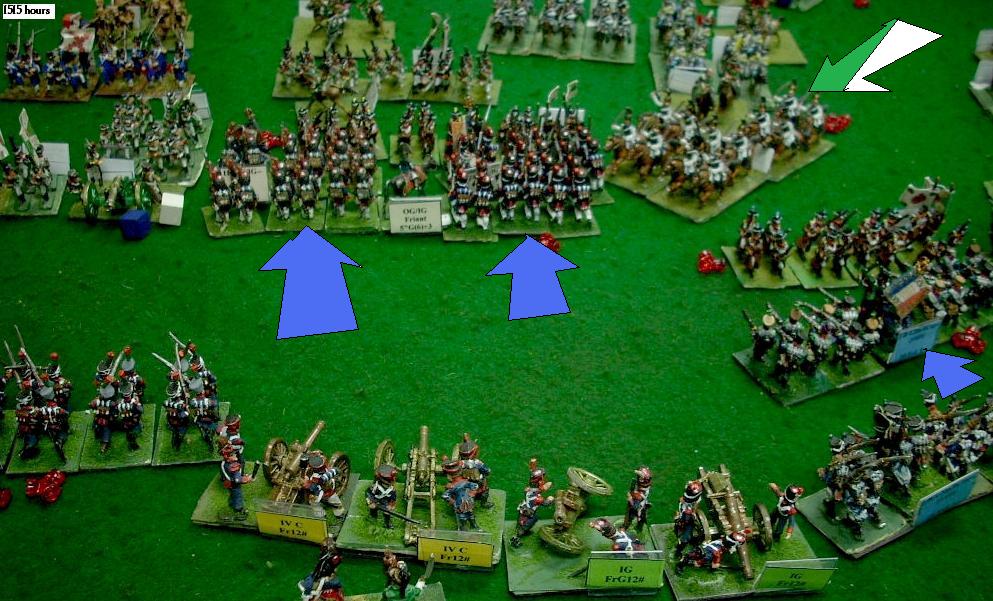
Startlingly, an Old Guard brigade would be routed
by a Russian infantry line. The other elite brigade would drive off the
cuirassier but took some losses in the brawl. Critically, three French columns
would break through one of the last solid lines in the Russian center. There was
now, but for a single brigade that had now repulsed three assaults, more than a
mile between the Russian flanks with no infantry.
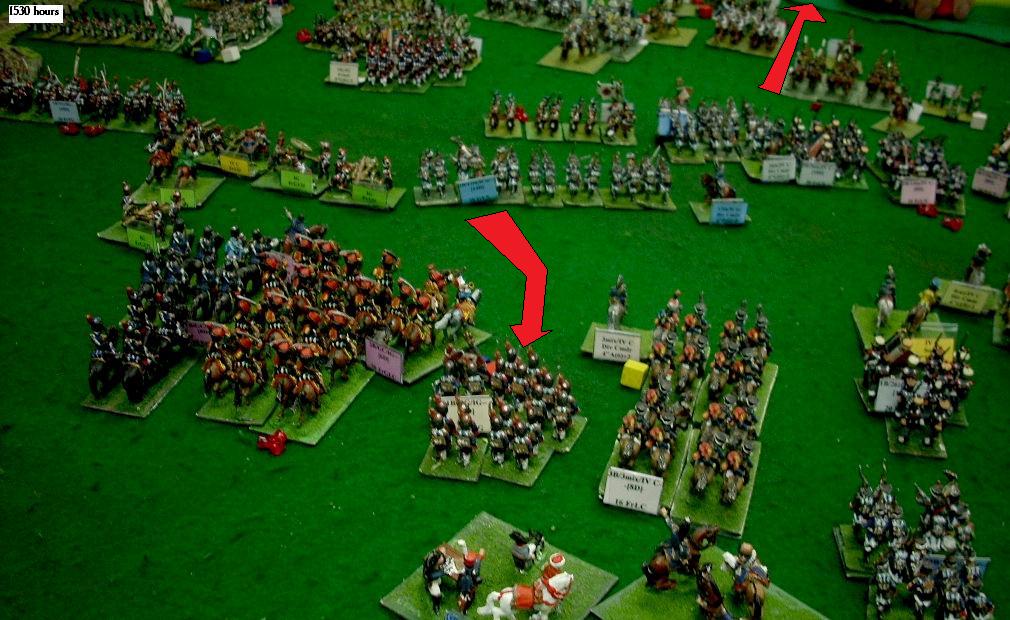
General Buxhowden orders a large portion of his
left flank to retreat, hurrying to get back to the right flank and the road to
Lubben. The French attacks now are almost like a mopping up operation, achieving
success after success. The Russian right wing remains intact but there is no
reserve available and the French are gathering momentum.
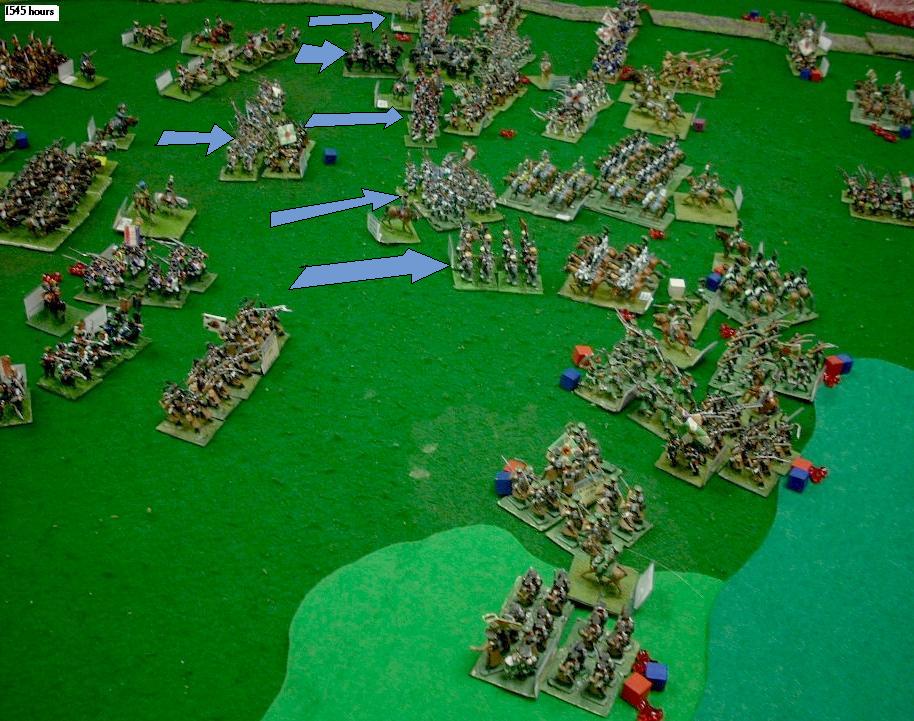
The Russian army breaks. There is still some
ordered cavalry to cover the retreat, and the right flank can buy some time, but
now the only hope for the men of Buxhowden is to make speed for Lubben.
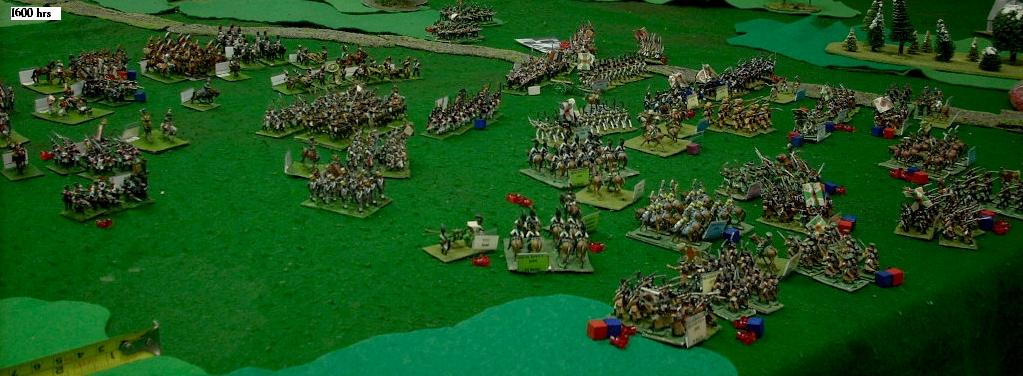
| |
Campaign System Estimated Force |
Battlefield Estimated Force |
Campaign System Estimated Casualties |
Battlefield Estimated Casualties |
| Allies |
55,000 |
69,000 |
10,500 |
13,000 |
| French |
62,000 |
54,000 |
6,000 |
5,000 |
















